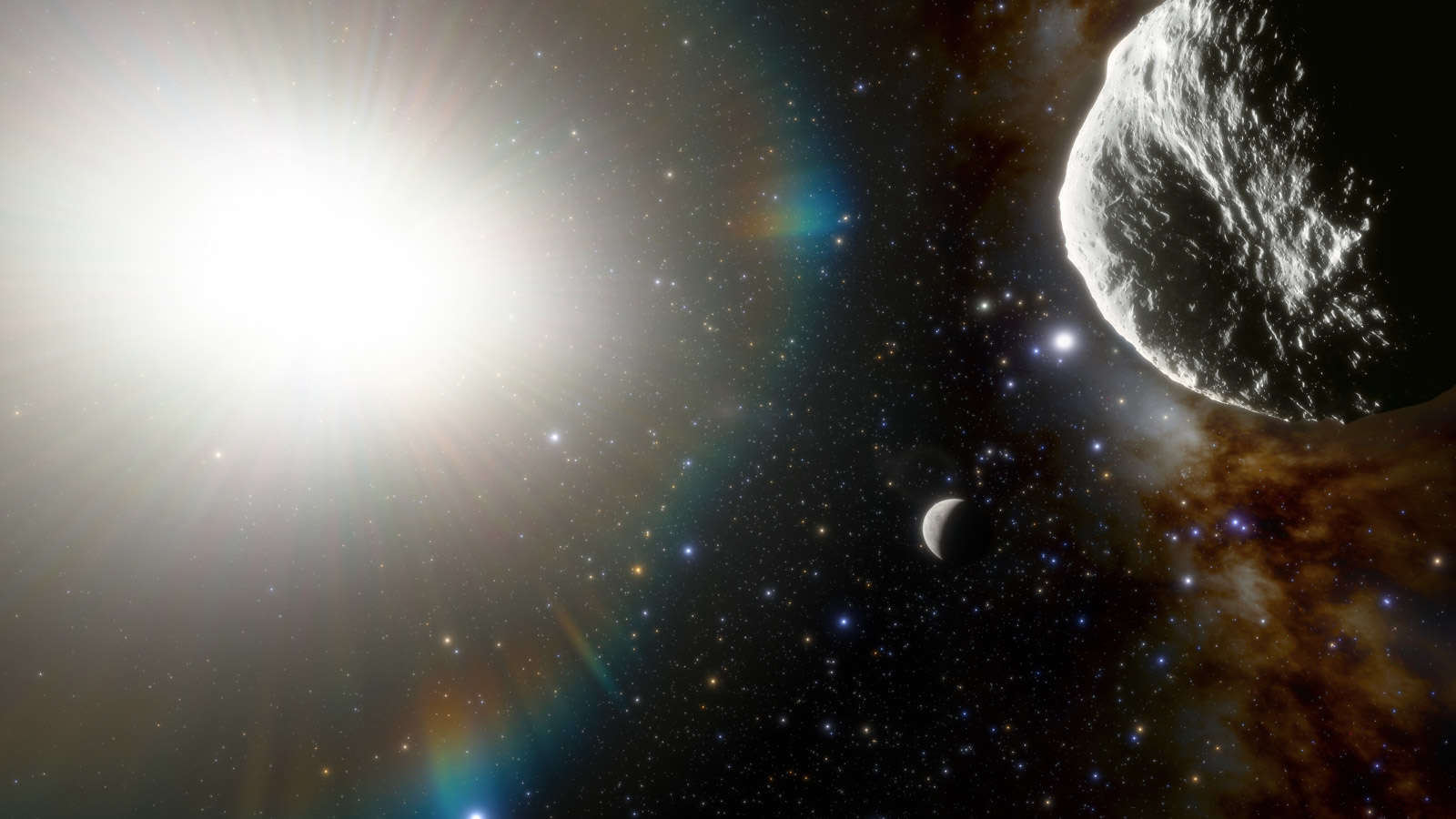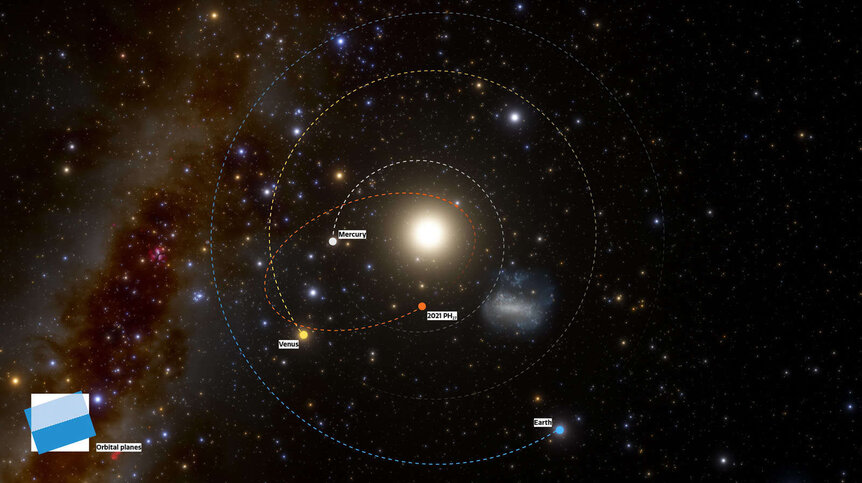Create a free profile to get unlimited access to exclusive videos, sweepstakes, and more!
Meet 2021 PH27, a newly discovered asteroid with the shortest known year!

Astronomers have discovered a new and odd asteroid: Called 2021 PH27, it orbits the Sun on the shortest orbit ever seen for any asteroid, taking it closer to the Sun than Mercury and only a little bit farther out than Venus!
It gets within a mere 20 million kilometers from the Sun at closest approach, which is less than 1/7th the Earth’s distance, and less than half Mercury’s closest solar distance. At farthest on its elliptical path it gets about 118 million km from the Sun.
Astronomers characterize an orbit by what’s called its semi-major axis, which is half its longest dimension. In this case, the semi-major axis of 2021 PH27 is about 70 million km, which is a record; no asteroid has ever been seen with a shorter orbit.
Its orbital period (the time it takes to go around the Sun once; in other words its “year”) is only about 114 days long, which is also a record. The previous record holders, 2019 LF6 and 2020 AV2, both have orbital periods of about 151 days.
This means it’s what we call an Atira class asteroid, which all have orbits entirely inside Earths orbit. Only about 20 are known, including the other two I just mentioned. That makes 2021 PH27 important all on its own; since we only have a handful of these objects any new addition can tell us new things.
For example, how does an asteroid hold together when it gets so close to the Sun? The surface temperature may get as high as 500° C (930°F), enough to melt tin, lead, and many kinds of rocks. It’s extremely unlikely to have anything like water at those temperatures, especially since it’s only about a kilometer wide.
We also know that asteroids around that size tend to be rubble piles, just loose collections of smaller rocks held together by gravity. How does getting that close to the Sun affect its shape, its structure, its interior stability?
And really, how did it get on this orbit in the first place? Besides the Sun’s gravity, other forces act on an asteroid, like what’s called the YORP effect: Sunlight has momentum, and over time photons hitting the rock can make it spin faster or slower, and even change its orbit. That puts a time limit on how long it could’ve been on this orbit, so it’s almost certain it formed elsewhere and was moved into this orbit, perhaps by a gravitational assist from Venus.
It can get decently close to Venus; in October 2022 it’ll pass just over 2 million kilometers from our evil twin. That won’t change the orbit much, but it shows that long-term viability of such an asteroid is questionable. I’ll note that 2021 PH27’s orbit is tilted by over 30° with respect to the inner planets’ orbits, so when it crosses the orbits of Venus and Mercury it’s well above or below their orbital planes. That makes a collision extremely unlikely. It also makes me wonder if it’s an extinct comet, one that ran out of ice long ago. Although the odd orbit itself is still a problem, comets can have high orbital tilts, so it being an old comet would at least explain that.
There’s much to learn from such rocks, but studying them is very difficult. From our viewpoint on Earth they never get far from the Sun in the sky — it’s the same with Mercury and Venus, which are always best seen after sunset and before sunrise, when its twilight (and in fact that’s when the asteroid was discovered). The Dark Energy Survey sweeps the sky looking for transients — objects that change brightness or position over time — and 2021 PH27 showed up in twilight images taken on August 13, 2021. It had moved visibly in two shots taken just three minutes apart! It’s really moving.
And that’s why so few Atiras are known. Finding them is hard against the glare of the twilight sky. This discovery shows that it’s possible though, which is encouraging. Also, for many years I’ve been fascinated by the idea that there could be a class of small asteroid orbiting the Sun entirely within Mercury’s orbit. Called vulcanoids, they are entirely theoretical since none has ever been seen. But if any are ever spotted they’ll tell us a lot about the dynamics of the very inner solar system.
More such rocks like this one will be found over time, and when they are we’ll learn that much more about our local neighborhood. It’s funny: This asteroid gets much closer to Earth than any in the main belt between Mars and Jupiter, yet it was only just discovered a week ago! This tells us that sometimes the nearest things to us can be the hardest ones to find, and that looking outward can be much easier than looking inward. Seems like a decent metaphor.





























